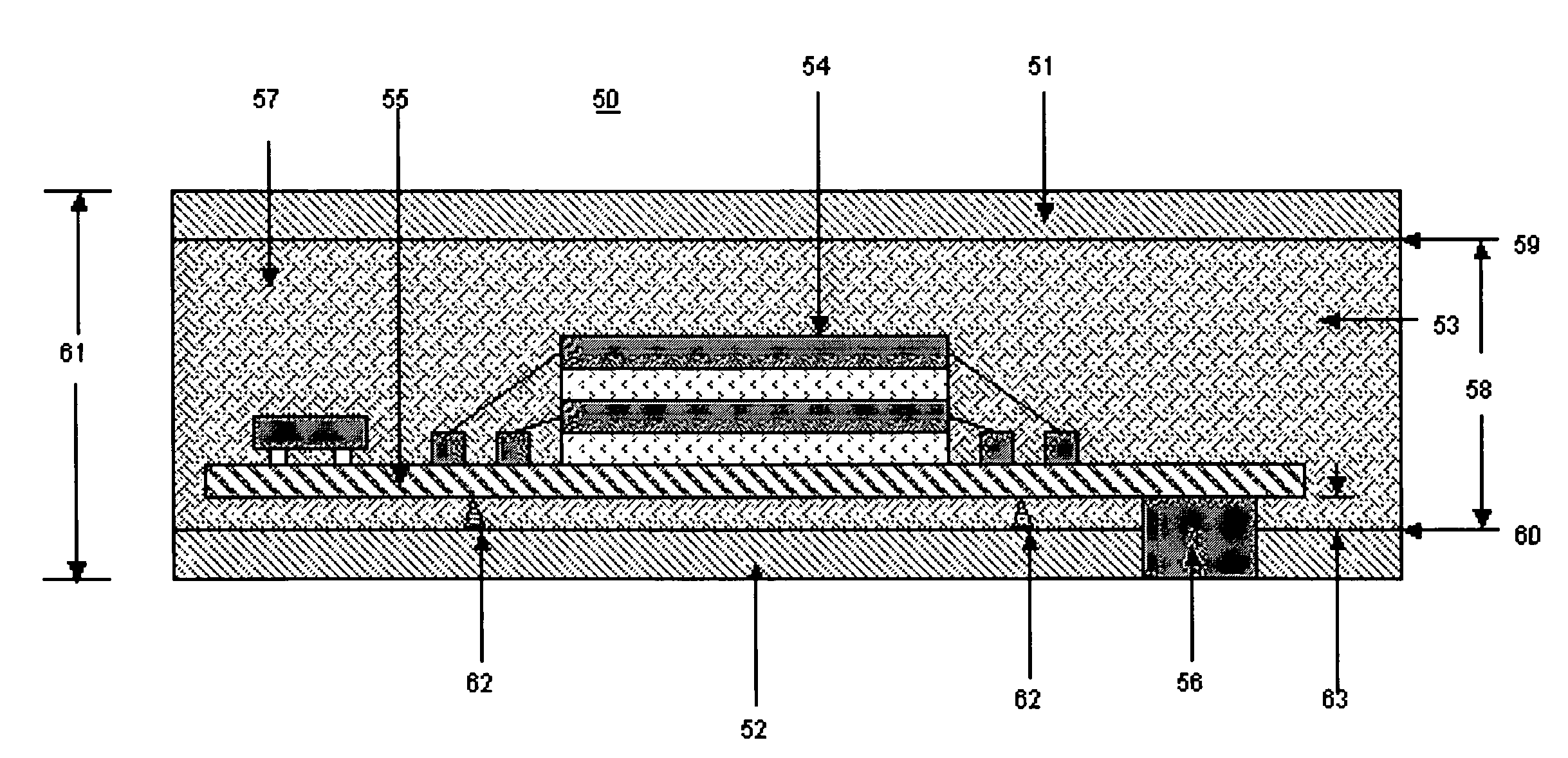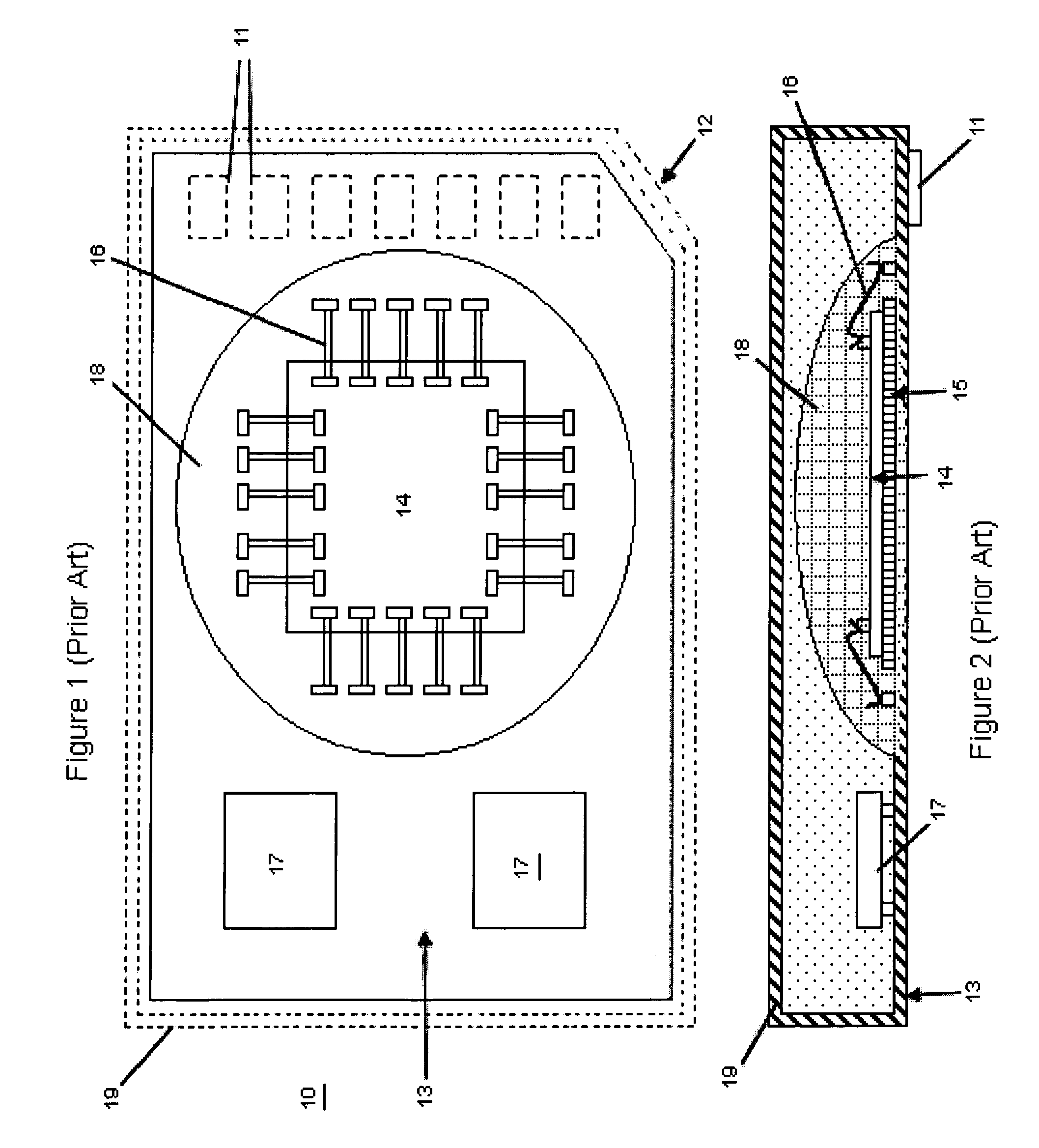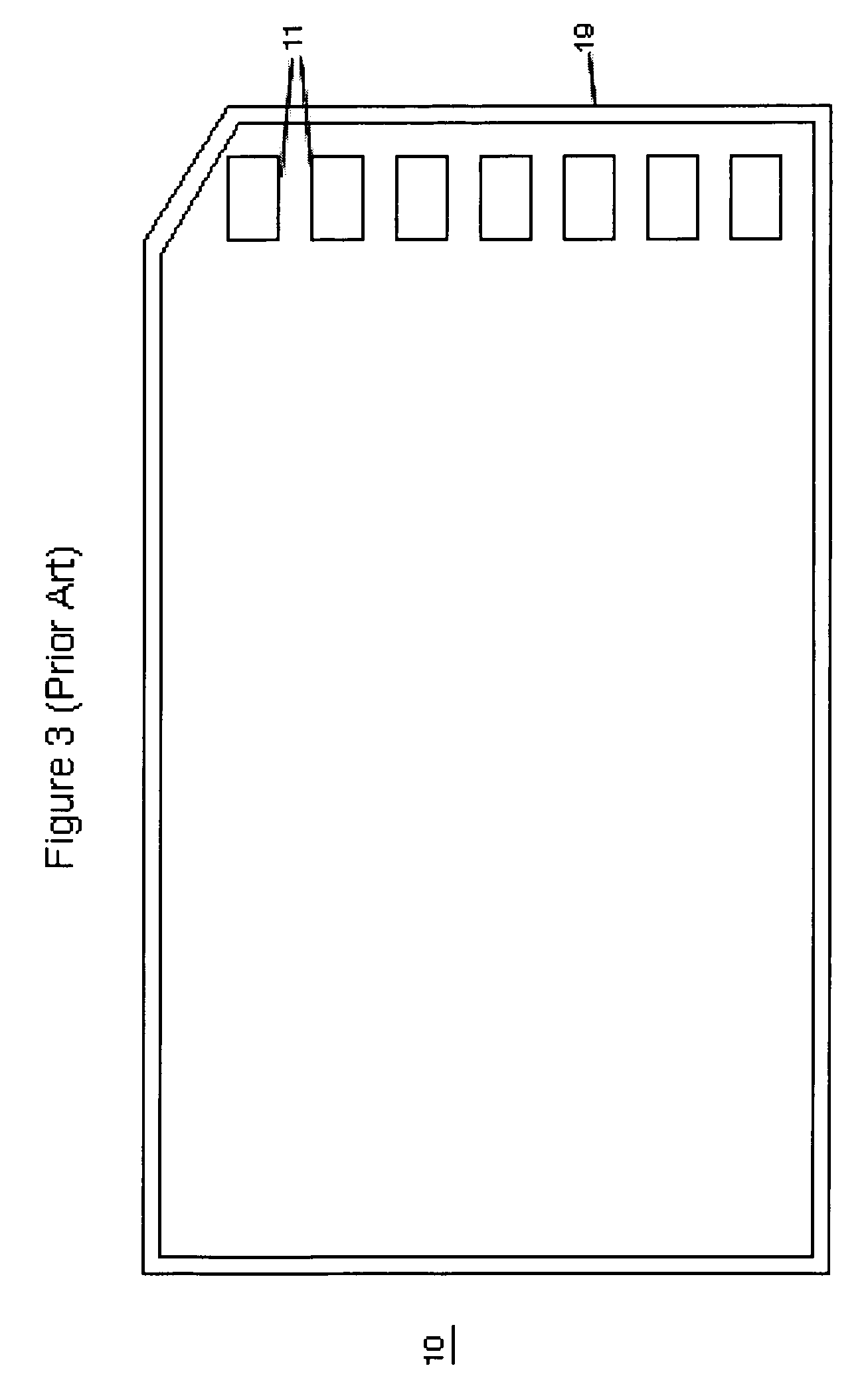Method for making memory cards and similar devices using isotropic thermoset materials with high quality exterior surfaces
a technology of isotropic thermoset materials and memory cards, which is applied in the direction of coatings, printed circuit boards, instruments, etc., can solve the problems of reducing the size and number of electronic components, limiting the positioning options of electronic components, and damaging microchips and other small electronic components. , to achieve the effect of saving processing time, reducing manufacturing cycle time, and high quality
- Summary
- Abstract
- Description
- Claims
- Application Information
AI Technical Summary
Benefits of technology
Problems solved by technology
Method used
Image
Examples
Embodiment Construction
[0023]FIGS. 4(a) and 4(b) illustrate a problem involved with the prior art methods of making Memory Cards. FIG. 4(a) depicts, in cut-away cross section, a sheet or layer of a plastic material 40 (e.g., a sheet or layer of polyvinyl chloride, polyurethane, etc.) having a top surface 41 and a bottom surface 42. Such sheets will generally have a thickness 43 ranging from about 0.075 mm to about 0.25 mm. A mound, drop, or dollop of a liquid or semi-liquid, high shrinkage, glue 44 is depicted as being recently dispensed on the top surface 41 of the plastic sheet 40 shown in FIG. 4(a). The mound of recently dispensed glue 44 depicted in FIG. 4(a) is shown having an initial width W1. FIG. 4(b) shows (in exaggerated form) the results of curing the mound of glue 44 shown in FIG. 4(b) to a smaller mound of cured glue 44′. The width W2 of the mound of cured glue 44′ depicted in FIG. 4(b) is considerably less than the width W1 of the mound of the newly laid liquid or semi-liquid glue 44 in FIG....
PUM
| Property | Measurement | Unit |
|---|---|---|
| shrinkage | aaaaa | aaaaa |
| shrinkage | aaaaa | aaaaa |
| pressure | aaaaa | aaaaa |
Abstract
Description
Claims
Application Information
 Login to View More
Login to View More - R&D
- Intellectual Property
- Life Sciences
- Materials
- Tech Scout
- Unparalleled Data Quality
- Higher Quality Content
- 60% Fewer Hallucinations
Browse by: Latest US Patents, China's latest patents, Technical Efficacy Thesaurus, Application Domain, Technology Topic, Popular Technical Reports.
© 2025 PatSnap. All rights reserved.Legal|Privacy policy|Modern Slavery Act Transparency Statement|Sitemap|About US| Contact US: help@patsnap.com



